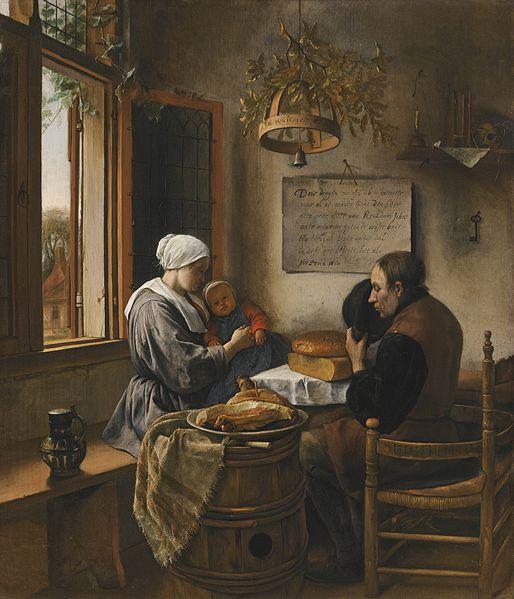Food and Drink in Britain and the Wider World, 1550-1800

Food and drink are the stuff of life. This is obviously true biologically, in that they provide the nutrients and energy which form and drive the human body. However, it is also true socially, culturally, economically, and politically. The history of food is not just about consumption. Because of its necessity it is important to all aspects of life. This was especially true for the preindustrial world where its production and transport formed the greatest part of all economies. Ensuring that there was enough food to feed a population was also of crucial political importance to any monarch or governor. It was also the main motivation for European trade with the rest of the world and for European expansion, colonisation , and chattel slavery. The desire for pepper and other spices, tobacco, tea, chocolate and above all sugar transformed much of the globe in the period covered by this course. In social and cultural terms, food was a vital part of sociability, work, religion and ceremony, and understanding how diet, tastes, and habits were part of society is vital. In order to provide enough depth this course will focus on the diversification of British diet and tastes, but within a comparative context. Cultures from which foods and consumption practices were adopted will be examined to see how this adoption took place. If the perennial importance of food and drink is obvious enough, then the early modern era is of especial historical significance for the British diet. This was the era when famine disappeared from English (if not Scottish and Irish) society, when brewers and wine merchants became some of the richest men in the country, when food riots ripped through market towns, when taxes on alcohol funded the growth of the modern state, when drunkenness became a political issue, when the populace tasted for the first time many of the commodities which we now take for granted – potatoes, beer, tobacco, tomatoes, sugar, tea. This course introduces students to this exciting and formative history of comestibles, encouraging them to think about how food and drink was produced, trafficked, consumed, politicised and aestheticized in the context of broader social processes. We will find that while food and drink are interesting and important subjects in their own right, they were also integral to some of the perennial concerns of early modern historians: commerce and colonialism, stateformation, Renaissance and Reformation, party politics, the growth of the market, relations between rich and poor. Although the focus is Britain, European comparisons and global connections will be made throughout. The course starts in the period when new colonial imports such as tobacco and plantation sugar were beginning to be adopted in European markets and closes in the late eighteenth century when these markets were disrupted by war, revolution as well as anti-tax and anti-slavery boycotts. It focuses on the diversification of British diet and tastes but within a comparative context where relevant. Cultures from which foods and consumption practices were adopted will be examined to see how this adoption took place. It will study the links between consumables and labour, medicine, ritual, sociability, political culture; the centrality of food and drink to global trade, colonialism, and national markets; the importance of literary, visual and material culture.
Image: Jan Steen, The Prayer before the Meal, (1660)
This material is intended for current students but will be interesting to prospective students. It is indicative only.
